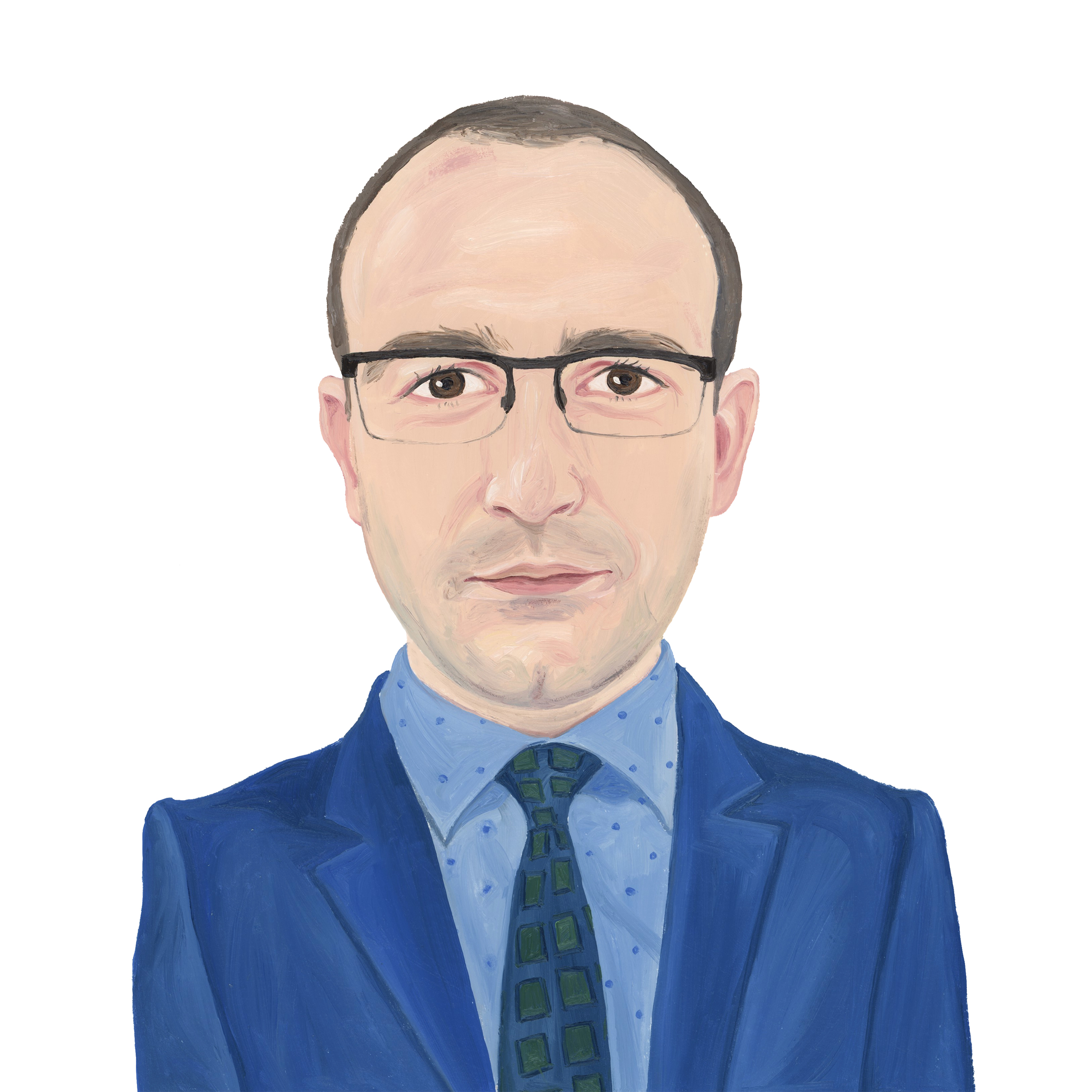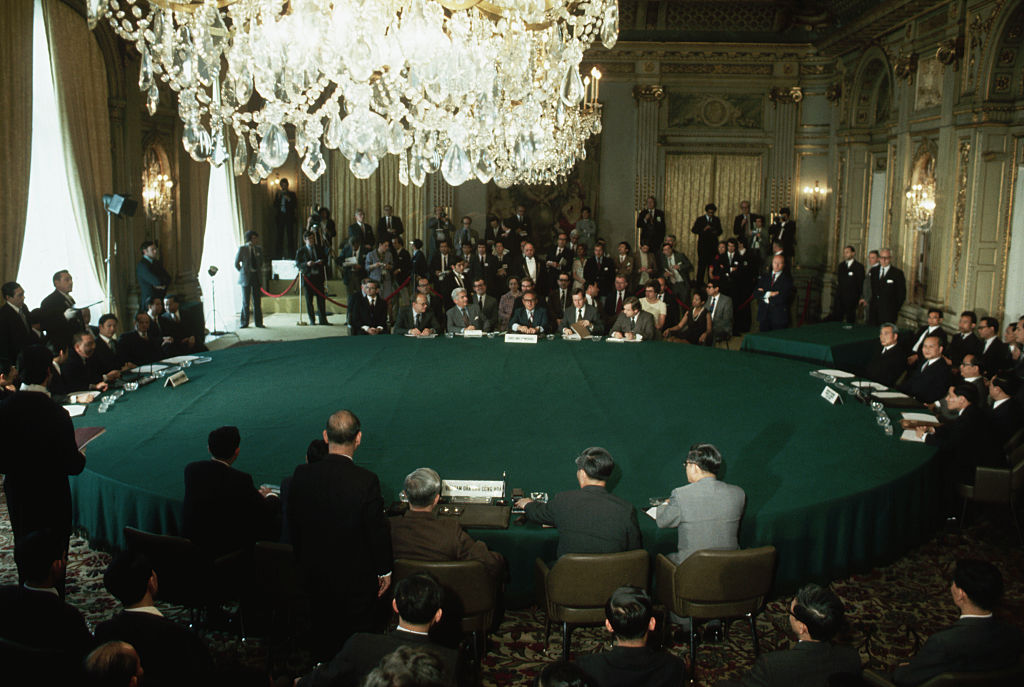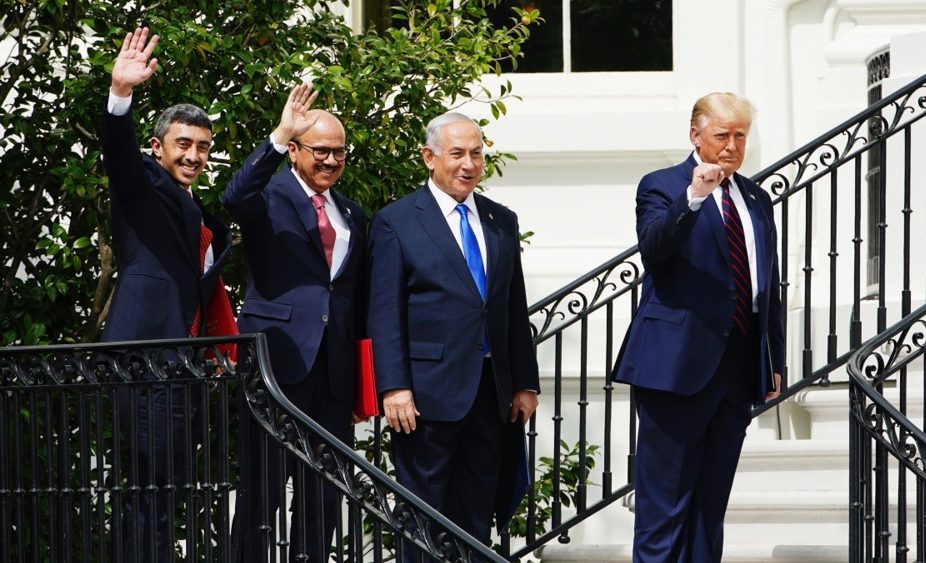It is the dead of winter and the country teeters on the brink of collapse. With energy now too expensive, cities are cold, overcrowded and rife with disease. Food, medicines and other essentials are scarce as the domestic agricultural production has been poor and the faraway war has disrupted international supply chains. Debt is sky-high. The economy, forcefully re-oriented in recent years by state fiat to comply with the elite’s cultish agenda, and having had its industrial resources misallocated on ideological grounds, is now in freefall.
Nothing works anymore: public services have broken down, and now the unions have called a general strike again. They are being joined by the masses of “peace-loving”, Russia-admiring, anti-capitalist demonstrators who hate their own country. The police, long infiltrated by the same worldview and led by weaklings, stands aside. The once-great warlike Army, now much smaller, ill-equipped, demoralised and partly infected with the same ideological virus, also remains aloof. After a long stretch of monumental errors and multiple re-formed Cabinets, the regime that took over a thriving nation leaves it in ruins and on the verge of dismemberment. It is washed away by the leftist extremist rebellion masquerading as “democratic revolution”.
From Freikorps to Azov
We know what happened next – because this is a window into history, even though it feels it could be our immediate future. By January 1919 Germany’s new revolutionary government, which had proclaimed the Weimar Republic, was itself being cornered by an even more radical and bloodthirsty movement: Karl Liebknecht’s hard-core communists. This conformed with the venerable tradition of murderous Left-wing rabble-powered revolutions – from the French in 1789 to the Russian in 1917 – where the initial “justice warriors” are soon outdone in their terrorism and crimes by even worse psychopaths like Rousseau’s Jacobins or Lenin’s Bolsheviks.
It is terrifying to consider how close Western European cultural-political civilisation came to extinction just two months after the end of the First World War. That January, Liebknecht’s “Spartacist Revolt” was within a hair’s breadth of taking power in Berlin and plunging Germany into the abyss of communist rule – and from there, Lenin’s world revolution would have surely spread further.
Friedrich Ebert’s SPD government was too weak to act, with hardly any authority over any forces that could be used for “law enforcement”. The country, suffering from years of blockade and shortages, was imploding; disorder and armed violence reigned in the streets. In the end, salvation for the newly-democratic regime came in the form of the Freikorps: counter-revolutionary volunteer units of (mostly) soldiers returning from the front, many of them former stormtroopers, operating quasi-independently like roving paramilitary organisations with the otherwise commendable mission of crushing the communist threat to the State.
The ultranationalist Freikorps were certainly abominable in their recourse to wanton violence, but unlike their Red opponents they at least acted, by and large, with a government mandate from Gustav Noske, the defence minister.
The Freikorps made short work of the Spartacists and they also hunted down and executed the “Red Devil” Liebknecht, as Karl was known, and his close collaborator and Lenin devotee, Rosa Luxemburg. This extra-judicial treatment was essentially no different from what Muammar Gaddafi suffered in 2011 from his local opponents to wide democratic Western applause. The defeat of the Spartacist Revolt, with all of its crimes, gave the Weimar Republic a new lease of life which it eventually squandered – again, as happened in Libya. Terrible and tragic as these events were in terms of their lack of due process, they stand as a warning to us across time and as lessons to learn from.
Undoubtedly, in the following years the story of the Freikorps grew even darker as it was from this milieu of violent anti-communist struggle that many Nazis later emerged; indeed, the Freikorps are often considered as the precursor to national-socialism. They will always be associated with extreme political violence, and condemned for it.
The incontrovertible fact remains, however, that at the decisive moment, when the legitimate democratic government of the country, and the republic itself, faced annihilation, the country’s leaders themselves – social-democrats to boot – turned to the nationalist Right-wing paramilitaries to do what needed to be done. This is the terrifying insight that should haunt all “do-good” politicians that play with the fire of social division – whether on immigration, culture wars or multiculturalism – without considering the risks of backlash down the line if things go wrong. Events may spin completely out of their control, and what they think is righteous policy today can give rise to great evils tomorrow.
One century after the events of 1919 we have seen very similar dynamics at play in Ukraine, with extremist ultranationalist political militias like Azov Battalion (now Brigade) or Right Sector becoming central to the survival of the state at its moments of greatest peril: first, during the Maidan Revolution and the 2014-15 Donbas campaign; and then in the critical early days of Russia’s 2022 invasion, most famously at the defence of Mariupol. In the meantime they have formally become embedded in Kyiv’s military structures, but retain their separate identity and elements of autonomy including their wider organisational (and partly criminal) networks.
There is no question over the extremism of these Right-wing groups. In many ways, in their paramilitary, autonomous outlook they can be seen as not unlike the Freikorps – and indeed, perhaps worse, given their outright neo-Nazi sympathies. All this has been openly reported and discussed in the mainstream Western press, sometimes with the unintended effect of validating some of Russia’s propaganda that insists it is fighting against “Nazis”. A Time article from before the war even presented the FBI’s concerns about Azov’s links to “white supremacist” terrorists in the US and internationally.
Despite representing all that Western elites and much of public opinion would rightly find the most reprehensible – i.e., literally Nazism – in any kind of political movement or faction, Ukraine’s Azov stormtroopers and their ultranationalist comrades-in-extremism have been hailed as heroes across the world for their bravery on the battlefield and implicitly for their key contribution to holding off Putin’s invaders. War can change everything.
Could this happen (again) in Europe?
Olaf Scholz may have given us Zeitenwende as a new term to indicate a “turning point in history”, in the wake of Putin’s invasion. But it is the older German word, Zeitgeist (the “spirit of the age”), that should frame our expectations. We are stepping into a renewed age of conflict and atrocities, and it is very likely that the West will never again experience the kind of stable, peaceful and prosperous life that it largely enjoyed after 1945.
The dogs of war have been let loose upon the world once again and too much is now being invested in this armed revisionism – principally by Russia, China and Iran – and too much blood has already been spilt especially in Eastern Europe, for things to get back to normal for at least one generation. This cycle of warfare abroad and, increasingly, violence at home, will have to run its course.
In these kinds of times social monsters – like paramilitary extremist movements – are eventually born as standards of conduct in public life slip, the rule of law weakens, and the politics of “anything goes” take hold.
The key ingredient required to send matters over the edge is the one that fundamentally peaceful and sane societies cannot produce: hard angry men, in numbers, and with real issues to be legitimately angry about, especially as concerns the future of their countries. It is the human factor that usually – thankfully! – fails in conspiracies and extremist undertakings: so often the spirit (ideological fervour) is willing but the flesh (competence and individual bravery) is weak. Alas, this is now changing.
Evidence of this turn in the balance of “social deterrence” has been mounting in recent years and months with the worsening of Europe’s internal socio-cultural crises, particularly in relation to immigration. In September, for example, Sweden had to call in the army to support its overwhelmed police service as it grappled with escalating immigrant gang killings.
In Britain, since the outbreak of the jihad-loving, anti-Semitic, pro-ISIS/Hamas marches following October 7, the police has likewise showcased not just its moral failure but also its practical ineffectiveness. One of the most shameful examples occurred in early December when the Manchester police made an arrest at a rally but the Islamist mob besieged the police van until their terrorist-sympathising comrade was released. As surely as night follows day, such public displays of Islamist power and police submission, if sustained over time, can only lead, eventually, to the nightmare of a severe counter-mobilisation.
Tensions are also simmering in France. As Anne-Elisabeth Moutet recently described in the Daily Telegraph, the country is almost on the brink of civil war. Already two years ago a group of retired French generals were warning publicly of the future need of a “military intervention” to stop the Islamists from “disintegrating society”, and hinting at a coup. In the meantime the domestic situation in the Hexagon is going from bad to worse, with regular, if isolated, terrorist attacks and even worse Islamist demonstrations than in Britain.
A vast popular awakening to these problems is underway in Germany as well, to a large extent reflected in the polls that now have the Right-wing AfD in second place. The Bundesrepublik is facing a perfect storm of a heavy migration and cultural dislocation, vastly increased energy costs and de-industrialisation. Even before all this, in 2021, the German intelligence services had uncovered a “coup plot” against the government. Although hopelessly incompetent and verging on the comical, the monarchist conspiracy did indicate that such things may be coming back in fashion even in the largely pacifist, ex-Nazi country.
Then there are the Polish ultranationalist movements, which are understood to have supplied many fighters to the Foreign Legion fighting in Ukraine, some of whom will return home. In addition there is the reservoir of latent violence in the Balkans, where the famously hard-edged Serbs are itching for a second round over Kosovo.
These are just some of the many red lights flashing all across Europe’s extremist dashboard. Yet this is not simply an amplification of older trends. Those, particularly on the Left, who have traditionally devoted disproportionate attention to Right-wing extremism – compared to that of the classic Left-wing or Islamist varieties – have always seen it as fundamentally driven by “racist” prejudices.
But this analysis is likely to miss the two new crucial factors that are coming into play. The first is the reaching of a tipping point, where concerns over immigration and cultural issues, which used to be a “far-Right” sport, are fast breaking into the mainstream rather than being the preserve of extremists. And the second is the potential a large-scale injection of military experience into Europe’s extremist underworld, which would have transformative effects.
If Ukraine loses – and especially if Putin achieves his “demilitarisation” objective – many of Kyiv’s demobilised soldiers, in the tens of thousands at least, will undoubtedly flee to the West at the end of the war. Most will likely present no problem. But a minority of them will have been so brutalised by the experience of war as to be uninterested or unable to re-integrate into civilian life that their instinct may be to turn to crime and other “anti-social” activities instead. But it doesn’t take much. We must remember that the Freikorps, likewise, were only ever a tiny fraction of the Imperial German Army returning home from the front.
This niche section of former Ukrainian troopers – to include, perhaps, some from the hardcore, hard-fighting Azov-style assault battalions – would still number in the thousands. Their impact on the ultranationalist extremist scene in Europe, after the war, could be significant – especially as it will very likely coincide with a critical aggravation of the current domestic tensions on the continent, to say nothing of what Russia might choose to do next in its political warfare against the West.
In this highly explosive mix brewing on the horizon we must also count another deadly ingredient: the enormous black market supply of weapons that could become available to Europe’s radicals, from a post-war Ukraine. Unfortunately it is a matter of record – and of constant US and EU criticism against Kyiv – that corruption in the Ukrainian Armed Forces is a huge problem and that some of the Western weaponry has already gone missing. In the worst-case scenario of a Ukrainian defeat it is reasonable to expect these trends to worsen.
Conclusion: two imperatives
There is no certainty in any of this coming to pass. The spectre of armed far-Right militias taking it upon themselves to “restore order” in a future Europe beset by external and internal security crises, where politics, economics and the social fabric have broken down, remains a far-off possibility. But it is not as far as it used to be – and it is the trend that should worry us, together with the accumulation of precursors to such situations that we can recognise from history.
If Western – especially European – nations want to avoid repeating the mistakes and experiences of the past, or of Ukraine in recent years, they will have to take urgent and drastic action on two fronts.
Firstly, they must address head-on the pernicious domestic trends outlined above. Things don’t improve by themselves, especially when it comes to such deep and thorny issues like uncontrolled migration, changing demographic and ethnic balances within countries, radical socio-cultural rifts, the assault on free speech, or the worsening incompetence of public servants and politicians, driven by woke HR recruitment rules and virtue-signalling rather than by meritocracy.
In this context, governments must now recognise the need take radical measures to address these issues and take the air out of the sails of the genuine “far Right” extremist and ultranationalist movements waiting in the wings. Otherwise these will grow increasingly aggressive in response to the failure of democratic authorities to get a grip. Anything less than such radical action – for example, on stopping the boats bringing thousands of African and other migrants into Europe – will leave the “far Right” dominating the narrative.
The second imperative is to continue supporting Ukraine’s war effort and at minimum ensure that Kyiv retains effective control of the majority of the country. Many in the West think this war is ultimately just Ukraine’s problem, and that, at worst, a “dirty deal” with Moscow might freeze the conflict. There is also a more realistic current of opinion that recognises the folly of believing that “selling-out” Ukraine would satisfy Russia’s appetite for conquest and influence rather than increasing it.
But even this clearer-eyed reading of the situation misses the mark. The main future threat to Europe from a Kremlin that had subdued Ukraine would not be armed aggression: it would take extraordinary circumstances for Putin to pick a direct fight with NATO, even with all the shortcomings of the Alliance. Rather, the real danger would consist in Russia using Ukraine as a giant base for unleashing a full-scale political warfare campaign against Europe.
The Kremlin would turn to its well-honed playbook for destabilising its enemies precisely through enabling and promoting the kind of militant extremism described above. Weapons, special intelligence operators, criminal networks, refugees, and God knows what else would start flowing into Europe from Ukraine over the Moldovan, Romanian or Hungarian borders – perhaps, in time, with the help of sympathetic political parties in these frontier countries.
This is the kind of corrupting and undermining political strategy that is Moscow’s speciality. The weak, divided and exposed European nations would be easy pickings once Ukrainian resistance crumbles. Western leaders must ensure that does not happen.
It is a sad and unfortunate commentary on the state of our world today that such examples like the Freikorps or Azov should hold any relevance to current affairs. But unfortunately it is impossible to ignore some of the similar elements between our times and those of the early Weimar Republic, or indeed to pretend that we cannot see how the story of Ukraine is becoming an increasingly pressing warning for what may happen further west of it if our governments fail to act. The Zeitgeist has turned, and we should heed the lessons of the past.
Gabriel Elefteriu is deputy director at the Council on Geostrategy in London and a fellow at the Yorktown Institute in Washington, D.C.






Putin may not think invading Ukraine was a mistake. Here’s why